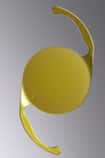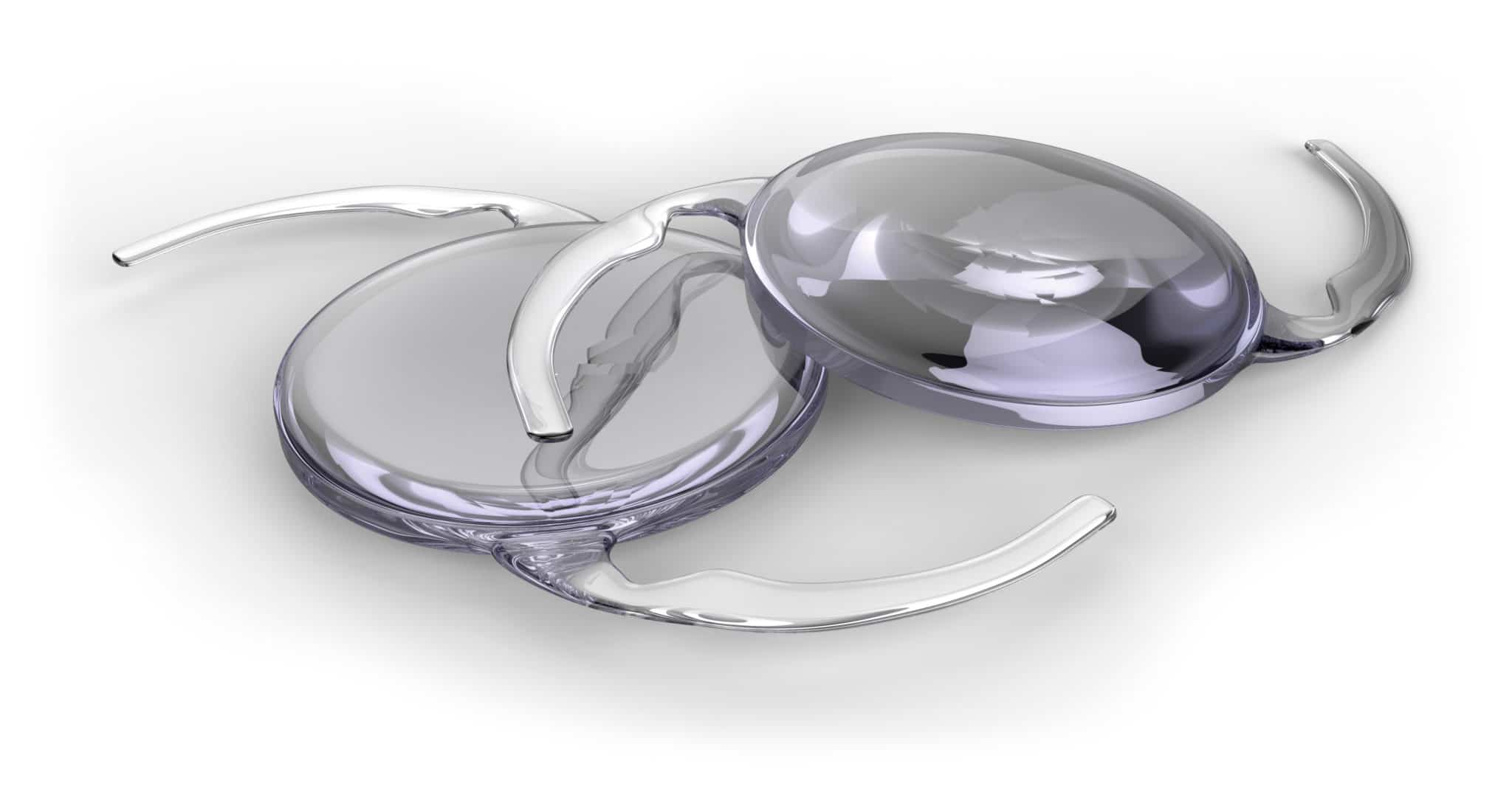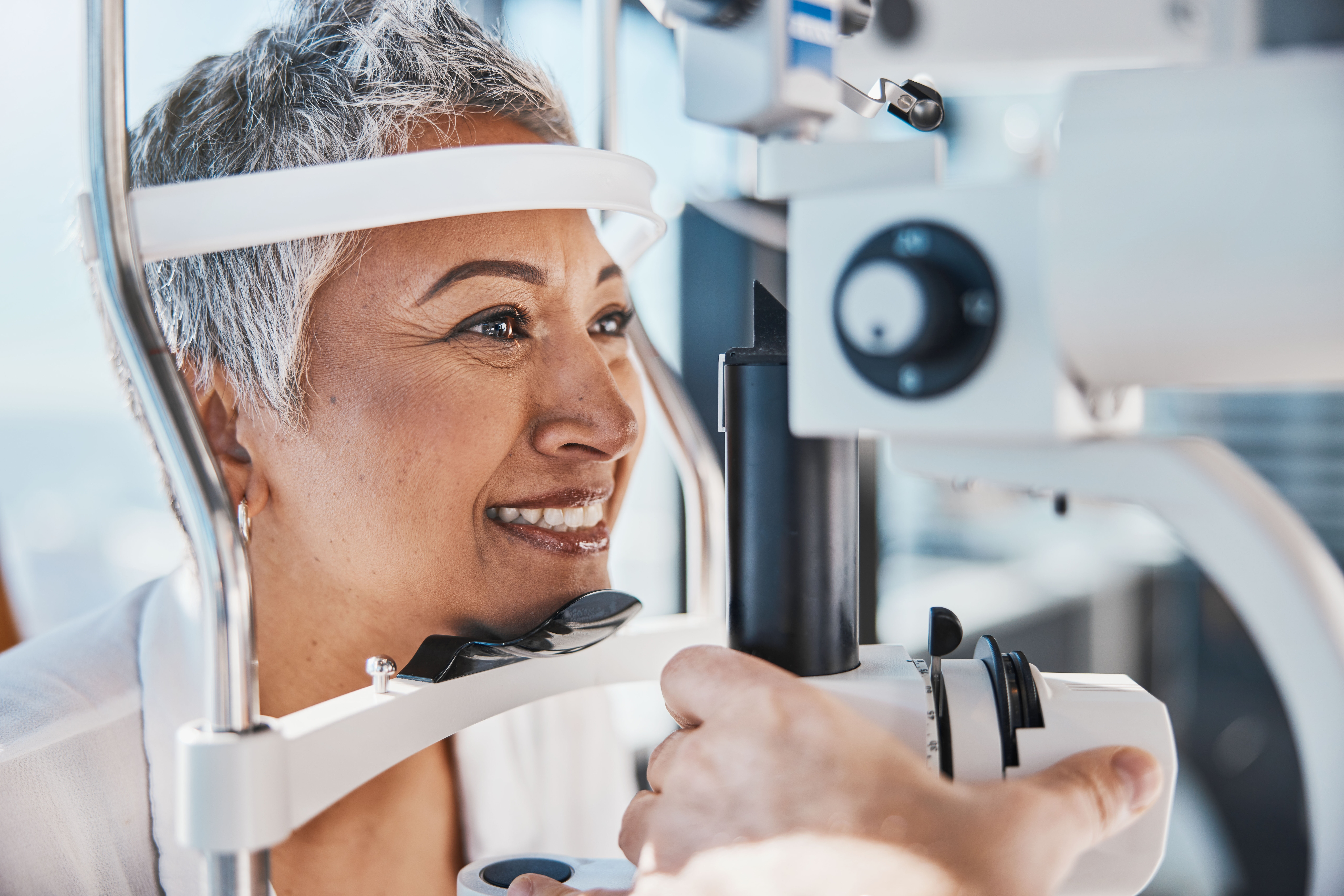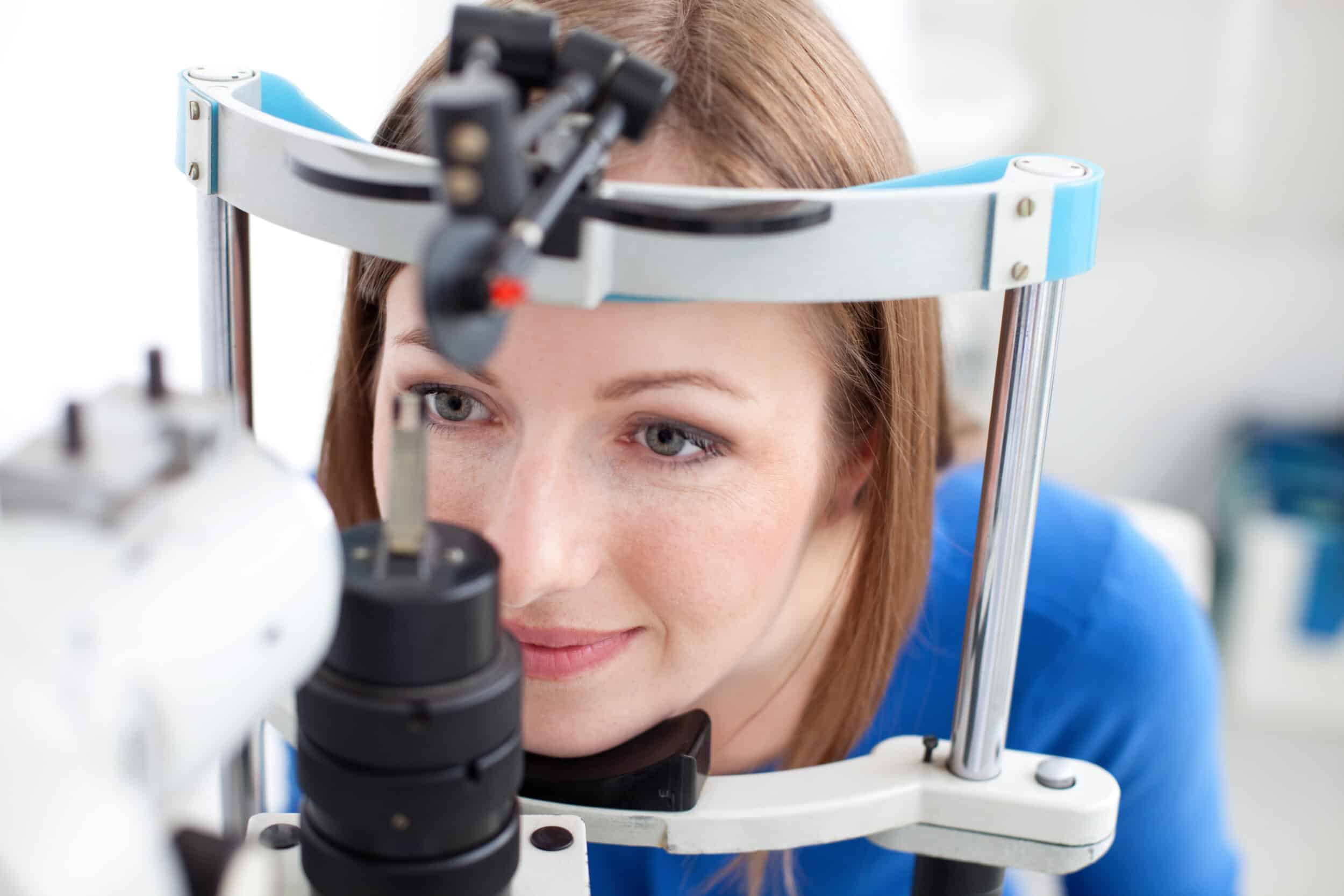What Are Premium Intraocular Lens Implants?


Premium lens implants are one of the options available at Shenandoah LASIK and Cataract Center to improve the quality of your vision after cataract surgery or with refractive lens implant surgery for those patients who are not good candidates for iLASIK.
As we age, or after cataract surgery with traditional intraocular implants, our eyes change and lose their ability to focus, at a close distance. With new advances in intraocular lenses, patients with cataracts or presbyopia are now able to enjoy full vision correction for near and far, by having a single surgical procedure that replaces the eye’s natural lens with a premium lens implants. Premium lens implants have a multifocal optical system, which allows patients to replace their poorly functioning natural lens with a lens implant that corrects both near and far vision and minimizes the need for glasses for most visual tasks.
When a cataract-clouded lens is removed, it needs to be replaced by an artificial lens. These are called intraocular lenses (IOLs). Prior to 2005, patients had to choose a single distance where these artificial lenses would focus, either distance or near. The patient would then wear glasses to correct the vision distance not addressed by the monofocal lenses, usually for up-close vision.
The Benefits Premium IOLs Provide
Premium IOLs allow you to see at all distances without glasses. This means you won’t have to constantly have glasses with you to correct for whichever option you chose not to correct with monofocal IOLs. Premium IOLs also now can correct for astigmatism and presbyopia, actually improving the patient’s refractive vision from what it was before the cataracts were removed.
Who Are Candidates For Premium Lens Implants?
These multifocal and accommodating IOLs are also known as “premium” IOLs. This is because they are more expensive than monofocal IOLs. While every cataract patient needs to choose some type of IOL (you cannot remove a cataract-clouded lens and not replace it), there can be resistance to choosing the more expensive multifocal or accommodating premium IOLs.
At Shenandoah LASIK & Cataract, we believe these IOLs are worth the investment as they enable our patients to basically live without glasses. The newest multifocal and accommodating IOLs even correct for astigmatism and presbyopia, so even reading glasses aren’t necessary.
The only people who aren’t great candidates for multifocal IOLs could be those in professions that require excellent distance vision. They may still need to have monofocal IOLs placed to optimize distance vision, understanding they will need reading glasses for up-close vision.
What Is The Procedure Used For Placing an IOL?
You need to remember that the cataract is your eye’s natural lens that has become cloudy due to the buildup of proteins. Cataract surgery removes the clouded lens, but then the eye is without a lens. That’s why inserting an artificial intraocular lens is necessary.
Cataract surgery is one of the most successful surgical procedures in the world. Amazingly, it takes just 10 minutes or so. Once the cataract is broken up and removed, the IOL is folded and inserted through the same small incision used to break up and remove the cataract. The lens is opened and the legs, haptics, hold the lens in place. That ends the procedure. Sutures are not needed.
The Type Of IOLs Shenandoah Lasik And Cataract Center Offers

All IOLs have a central optical zone, with peripheral “legs” (called haptics) that secure the lens implant inside the lens capsule of the eye.
These are your basic categories of current IOL options:
Fixed-Focus Monofocal IOLs
Fixed-Focus Monofocal IOLs have a single focus strength for distance vision. You will still need reading glasses for up-close vision and probably watching TV if you choose this IOL.
Accommodating IOLs
Accommodating IOLs can respond to eye muscle movements and shift focus to near or distant objects. They can do this because the haptics of these lenses are flexible, allowing the optical portion of the IOL to move slightly forward to focus up close.
This is similar to how your eye’s natural lens changes for different focal ranges. There are only two accommodating IOLs that have been approved by the FDA: Crystalens IOL and Trulign Toric IOL. Other models are currently in clinical trials.
Multifocal IOLs
Multifocal IOLs are similar to glasses with progressive lenses. Different areas of the lens have different focusing strengths, allowing for near, medium, and far vision. With multifocal IOLs, both near and far objects are in focus at the same time, so the wearer has a little bit of an adjustment period.
But the brain quickly learns to select the visual information needed to form the proper image, whether near or far. Some patients feel that multifocal IOLs provide somewhat better up-close vision than accommodating IOLs. There are a wide variety of multifocal IOL brands and models.
Toric IOLs
Toric IOLs can be fixed focus, accommodating, or multifocal, but they have the added benefit of correcting for astigmatism.
Are There Risks With Cataract Surgery And Placement Of IOLs?
Cataract surgery is so common that eventually over half of the population will likely have it. Complications are very rare, and if any of these happen they can usually be successfully treated. These are the risks:
- Inflammation
- Infection
- Bleeding
- Swelling
- Drooping eyelid
- Dislocation of the IOL
- Retinal detachment
- Glaucoma
- Loss of vision
What Will My Results Be After Surgery And Receiving An IOL?
Compared to the cloudy vision that you had been living with due to the cataract, you’ll enjoy your new crystal-clear vision. Cataract replacement lens surgery is permanent. The IOL in your eye will not cloud as your natural lens did. Also, depending on which IOLs you chose, any former vision problem, such as farsightedness, astigmatism, and presbyopia, could now be corrected. By choosing a premium IOL, you probably will not even need reading glasses any longer.
At the time of your visit, our doctor will recommend which type of premium implant is most appropriate for your eyes and will advise you or the possible need for postoperative laser correction.
Patient Testimonials
What People Say About Us!
“The doctors and staff are very helpful and try really hard to help me get all my procedures done in a limited amount of time that I have and I am grateful!!!
- Rex Bixler
Click here to read more reviews.
Are There Any Lifestyle Changes Needed After Getting Premium Lens Implants?
After receiving premium lens implants, you can generally return to your regular lifestyle with minimal adjustments. You may need to make a few minor changes, including:
- Avoiding strenuous activities
- Protecting your eyes from irritants like dust or water
- Wearing sunglasses to protect your eyes from bright light
- Keeping up with routine eye care, such as using prescribed eye drops and attending follow-up appointments
Most patients can get back to normal activities after a few days, with improved vision enhancing their quality of life.
How Long Do Premium Lens Implants Last?

Premium lens implants are designed to last a lifetime. Made from durable materials, these implants are meant to stay clear and functional indefinitely.
Unlike natural lenses, premium lens implants do not age or deteriorate over time. However, regular eye check-ups are essential. They allow your doctor to track your eye health and ensure the implants continue to perform optimally.
In rare cases, a condition called posterior capsule opacification (PCO) can occur and cause the lens to become cloudy. This is treatable with a simple laser procedure.
What Is the Recovery Time After Premium Lens Implant Surgery?
Recovery time after premium lens implant surgery is typically short. Most patients notice vision improvements within the first few days. However, full recovery can take several weeks.
During this period, it’s normal to experience symptoms like:
- Mild discomfort
- Light sensitivity
- Blurry vision
Following your surgeon’s post-operative care instructions will facilitate a smooth recovery. This includes using prescribed eye drops and avoiding certain activities. Regular follow-up visits will help monitor your progress and address any concerns.
What Activities Should I Avoid After Getting Premium Lens Implants?
After getting premium lens implants, you may want to avoid certain activities during the initial recovery period. These activities include:
- Heavy lifting
- Strenuous exercise
- Swimming
- Rubbing your eyes
- Wearing eye makeup
Are Premium Lens Implants Suitable for People With Glaucoma or Macular Degeneration?
Premium lens implants can be suitable for individuals with glaucoma and macular degeneration. However, suitability depends on the severity and specific circumstances of each case.
An eye specialist must thoroughly assess the patient to determine if premium lens implants are appropriate. In some instances, additional treatments or modifications to the surgical approach might be necessary.
Can I Have Premium Lens Implants in Both Eyes at the Same Time?

Yes, it is possible to have premium lens implants in both eyes. However, they are typically implanted in separate procedures, spaced a few weeks apart. This staged approach allows one eye to heal and adapt to the new lens before proceeding with the second eye.
Some patients may be suitable candidates for bilateral surgery. Your eye surgeon will consider your specific situation and help you determine the best treatment plan.
Why Choose Shenandoah LASIK & Cataract Center?
At Shenandoah LASIK & Cataract Center, we offer a comprehensive array of services designed to support all your vision needs. Our dedicated team prioritizes you, the patient, guaranteeing personalized care and exceptional outcomes.
With our advanced technology and wealth of expertise, you can trust us to enhance your vision and improve your quality of life. Choose us for superior care and a strong commitment to your visual health.
Schedule A Consultation
If you’re interested in learning more information about our premium lens implants, or you want to schedule an appointment with Shenandoah LASIK & Cataract Center, call our office at 540-722-6200.


